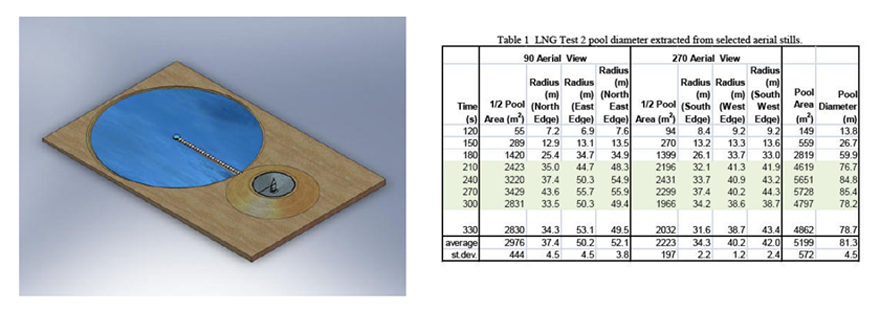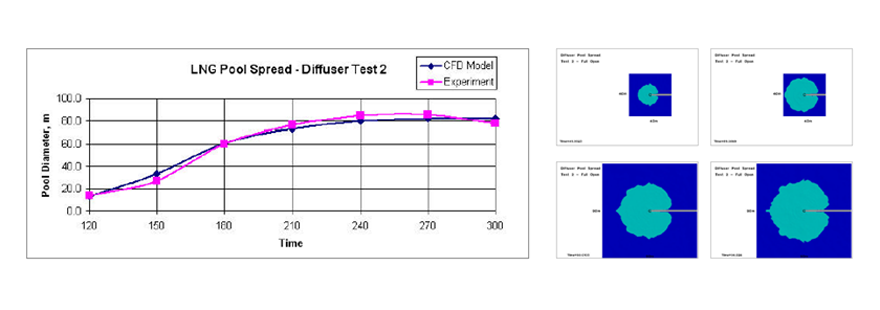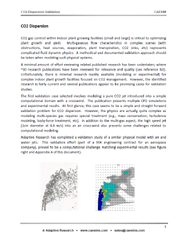A D V A N C E D C O M P U T E R - A I D E D E N G I N E E R I N G S O L U T I O N S
H A V E a Q U E S T I O N ?
I N F O R M A T I O N R E Q U E S T
Fill out the following form to request additional information on the capabilities of CAESIM
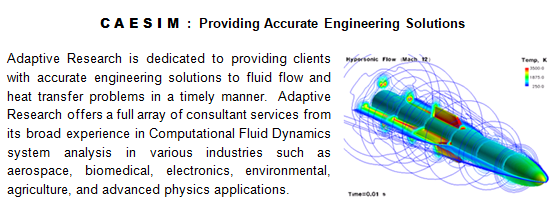
E X P L O R E U N L I M I T E D S I M U L A T I O N P O S S I B I L I T I E S !
C O M P U T E R - A I D E D E N G I N E E R I N G S I M U L A T IO N P L A T F O R M
F L U I D F L O W, H E A T T R A N S F E R, A N D M U L T I - P H Y S I C S
Validation and Verification
The purpose of validation and verification is to ensure that the CFD software performs its intended function. This process typically consists of testing the software to solve known analytical and test case application problems, and comparing simulation results against published experimental data. Each developed physics module is verified to produce known results of engineering problems and related data.
SNL conducted a large scale experiment to examine transient LNG pool spreading behavior on water. CAESIM's STORM solver was utilized and compared to experimental data. LNG was spilled onto a large pool of water with a diameter of 120 meters. A specially constructed release device (diffuser) was placed in the center of the pool. Initially, LNG was released at an average flow rate of 0.16 cubic meters per second, and lasting 40 seconds.
Example Validation Studies
Nuclear Storage Facility
A detailed experimental study of the Los Alamos nuclear storage facility was performed in 1997 by Bernardin et al. [1] to assess the cooling efficiency of the airflow inside and outside a storage pipe that can hold 14 fuel canisters. Since each of the canisters is designed to generate at most 15W of thermal energy, the total heat dissipated by the nuclear fuel is 210W. The heat generated by the canisters induces a buoyant flow inside the storage pipe. The heat absorbed by the pipe from free convection and radiation will in turn drive a natural convection airflow on the outside of the storage unit. The pipe is also expected to loose heat to the outside walls of the facility through radiation.

Plant Transpiration
The publication "Field experiment on transpiration from isolated urban plants", Hagishima et al, 2007, presents the effects of pot plant density on transpiration rates in a series of field experiments. A CAESIM model has been developed representing one of the pot plant densities as described in the publication (medium density). The CFD model has been executed and compared with the published experimental results. Some assumptions were made in order to best match the physical conditions of the experiment. For example, leaf area indices (LAI) are assumed to be moderate (LAI set to 2.0). The average transpiration rate for the center potted plant was 4.1e-6 Kg/m^2-s.
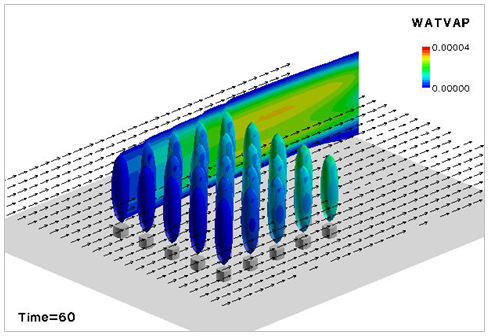
Turbulent Liquid Jets
Research Publication Abstract: “In this study, we employ a recently proposed spectrally refined interface (SRI) tracking method (Desjardins & Pitsch 2008) to study liquid jets in cross flow through detailed numerical simulations. … From the non-dimensional parametric space, the effect of two dimensionless groups, namely the Weber numbers corresponding to the liquid jet and cross flow, which dictate the likelihood of breakup of the liquid jet are investigated.” The main objective for this validation case is to produce CFD simulation results that qualitatively compare to the cases presented in the publication, focusing on liquid column characteristics (i.e., length and trajectory).

Validation Reports
© 2024 Adaptive Research. All rights reserved.



